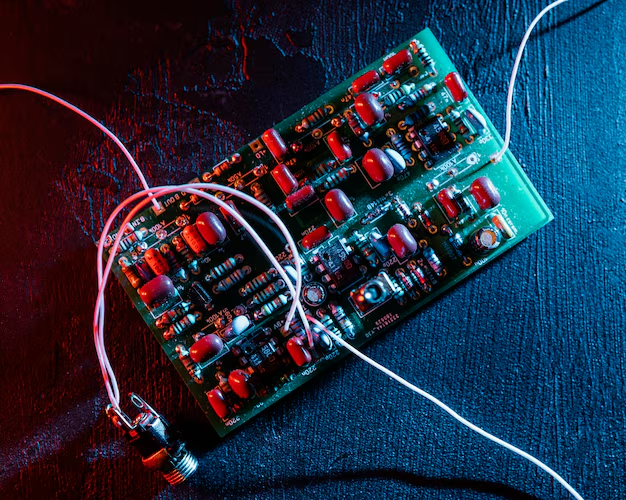Ever wondered how you can take your LED setup to the next level? If you’re working with a Raspberry Pi and want to control LED brightness, using Pulse Width Modulation (PWM) is a game-changer. With Hyperion, a popular open-source software for ambient lighting, you can easily sync your LED lights with whatever’s happening on your screen. In this guide, we’ll walk you through how to hook up your LED to a Raspberry Pi’s PWM for smooth, dynamic lighting control. Ready to add some glow to your setup? Let’s dive in!
Why Use PWM for LED Control?
Table Of Contents
- 1 Why Use PWM for LED Control?
- 2 What is Hyperion?
- 3 What You’ll Need
- 4 Step 1: Setting Up Your Raspberry Pi
- 5 Step 2: Wiring the LED Strip to the Raspberry Pi
- 6 Step 3: Installing Hyperion
- 7 Step 4: Configuring PWM for LED Control
- 8 Step 5: Syncing Hyperion with PWM Control
- 9 Step 6: Testing the Setup
- 10 Troubleshooting Tips
- 11 Conclusion
When it comes to controlling LEDs, Pulse Width Modulation (PWM) is a popular method because it allows you to adjust the brightness without altering the voltage. By rapidly switching the power on and off, PWM simulates different brightness levels, making it perfect for creating smooth dimming effects. Raspberry Pi, with its built-in GPIO pins, supports PWM, which means you can easily manipulate the LED’s brightness with just a few lines of code.
What is Hyperion?
Hyperion is an open-source ambient lighting software that syncs LED lights with your display. If you’re building a home theater setup or want some ambient lighting behind your screen, Hyperion is a great option. It works by capturing what’s on your screen and adjusting the LEDs in real-time, making your viewing experience more immersive. Combining Hyperion with a Raspberry Pi and PWM-controlled LEDs gives you both functionality and customization.
What You’ll Need
Before we jump into the setup, here’s what you’ll need for this project:
- Raspberry Pi (any model with GPIO support)
- LED strip (preferably WS2812B or similar)
- Power supply (make sure it’s compatible with your LED strip)
- Jumper wires for connections
- Hyperion software (installed on your Raspberry Pi)
- Resistor and transistor (for smoothing the PWM signal, optional but recommended)
Step 1: Setting Up Your Raspberry Pi
First things first, make sure your Raspberry Pi is running the latest version of Raspbian or Raspberry Pi OS. You’ll also need to enable SPI (Serial Peripheral Interface) and I2C (Inter-Integrated Circuit) for proper communication with the LED strip.
- Open your terminal on Raspberry Pi and run:arduinoCopy code
sudo raspi-config - Navigate to Interface Options and enable SPI and I2C.
- Reboot your Pi to apply the changes.
Step 2: Wiring the LED Strip to the Raspberry Pi
Now comes the fun part—wiring! Follow this wiring diagram to properly connect your LED strip to the Raspberry Pi.
- Connect the ground (GND) of the Raspberry Pi to the GND of the LED strip.
- Connect the PWM pin (GPIO 18 for most Pi models) to the data in of the LED strip.
- Ensure your power supply is wired correctly to power both the Raspberry Pi and the LED strip.
Step 3: Installing Hyperion
Next, you’ll need to install Hyperion on your Raspberry Pi. You can do this directly from the terminal by running the following commands:
- Update your package list:sqlCopy code
sudo apt-get update - Install Hyperion with:arduinoCopy code
sudo apt-get install hyperion
Once installed, you can configure it by using the Hyperion web interface, where you’ll set up your LED strip layout, define zones, and tweak lighting effects.
Step 4: Configuring PWM for LED Control
Now, it’s time to configure the PWM settings. By using Python or the PiGPIO library, you can control the brightness of your LEDs with simple PWM code.
Here’s a basic Python script to get you started:
This script gradually increases and decreases the LED brightness using PWM. You can easily modify it to sync with Hyperion’s real-time effects.
Step 5: Syncing Hyperion with PWM Control
Hyperion can handle the color and effect syncing for your LEDs, but since you’re using PWM, you’ll want to configure Hyperion to match the GPIO pin used for PWM control.
- Open the Hyperion web interface (accessible through your Pi’s IP address).
- Navigate to the LED Hardware settings.
- Set up the GPIO pin (usually GPIO 18) and configure it for PWM control.
Step 6: Testing the Setup
After everything is connected and configured, it’s time to test. Run Hyperion, play a video or display some media on your screen, and watch as your LEDs sync with the content. You can control the brightness and color transitions smoothly with the help of PWM and Hyperion working together.
Troubleshooting Tips
- No lights? Double-check your wiring and ensure the correct GPIO pin is set for PWM.
- Flickering LEDs? This might indicate an issue with the power supply or the PWM signal. Try adding a resistor and capacitor to smooth the signal.
- Brightness issues? Adjust the duty cycle in the PWM script to fine-tune brightness levels.
Conclusion
By hooking up your LED strip to a Raspberry Pi’s PWM and using Hyperion for dynamic lighting control, you can create an immersive lighting experience for your media setup. Whether you’re looking to build an ambient lighting system for your TV or just want to play around with LEDs, this project opens up endless possibilities for customization.
